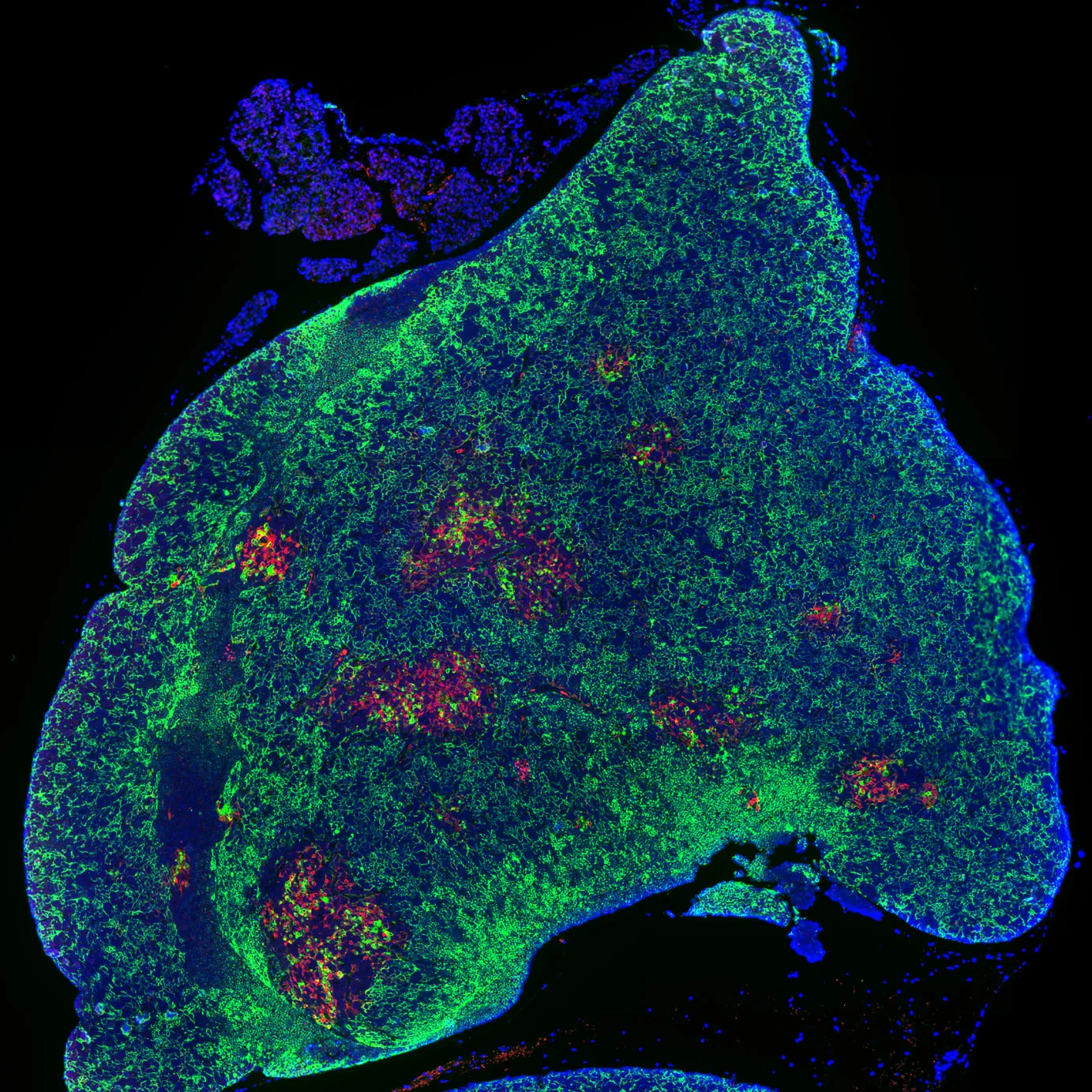The microenvironment of the newborn and aged thymus
An important component of our lab’s program in T lymphopoiesis is our long-standing interest in the microenvironment of the developing thymus changes during pre and postnatal development. The thymus is necessary for the generation of T cells from hematopoietic stem cells and lymphoid progenitors. Thymic function deteriorates with aging and also after chemotherapy, stem cell transplantation, irradiation and infections such as HIV. Poor thymic function can increase the risk of infection, autoimmune diseases and cancer. Our group has studied the microenvironment of the neonatal thymus, stimulated by our observations in both in clinical stem cell transplantation and in experimental models that reconstitution of the thymus during early postnatal life is qualitatively different to that in later childhood. Through our investigations into those mechanisms that drive thymic growth in the neonate, we have developed the tools to characterize the rare murine (C. de Barros et al, J. Immunol 2020) and human thymic stromal sub-populations present during embryonic and postnatal development, using flow cytometry and gene expression profiling. Using the knowledge gained from these basic studies we are building an understanding of the cross-talk that exists between the vascular, mesenchymal and epithelial compartments in the thymus and how these mechanisms change during times of rapid growth and involution.
